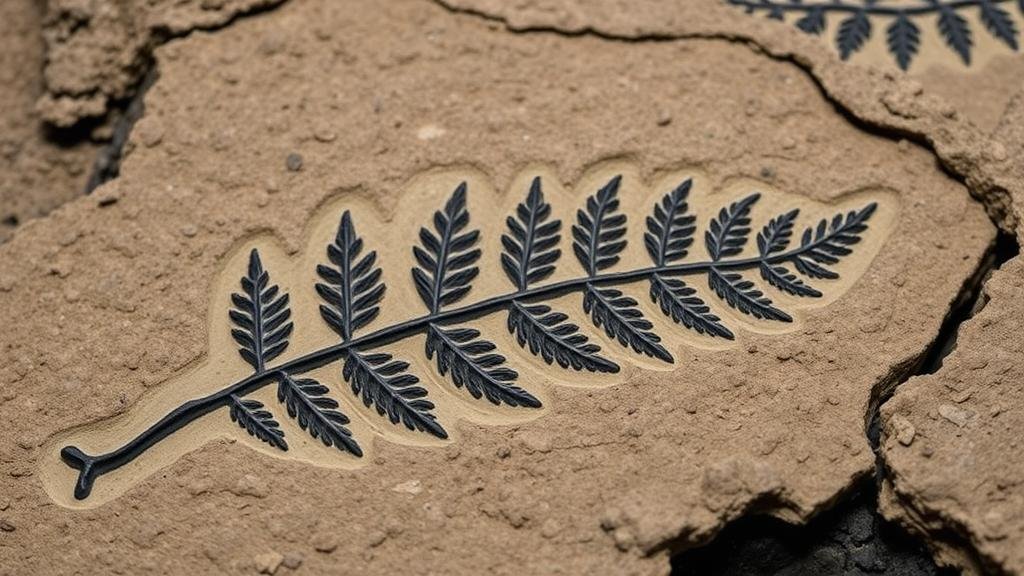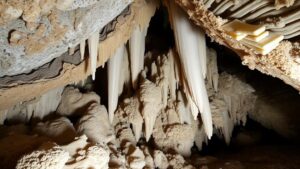Unearthing fossilized fern imprints in the coal-rich regions of Appalachia.
Unearthing Fossilized Fern Imprints in the Coal-Rich Regions of Appalachia
Appalachia, a region steeped in geological history, is renowned for its coal-rich fields and the fossilized remains found within them. Among the most intriguing discoveries are the imprints of ancient ferns, which provide valuable insights into the prehistoric ecosystems that once thrived in this area. For rockhounds and mineral collectors, unearthing these fossilized ferns can be both a rewarding hobby and an enlightening educational experience.
The Geological Landscape of Appalachia
The Appalachian region spans from the northern parts of Alabama to Newfoundland, showcasing a diverse array of geological formations. coal deposits found here are primarily of Pennsylvanian age, which dates back to approximately 300 million years ago. During this period, vast swampy environments facilitated the growth of lush vegetation, including various fern species.
As organic matter accumulated and was subjected to intense pressure and heat over millions of years, it transformed into coal. The remarkable preservation of ferns in these deposits offers a glimpse into a diverse flora that played a crucial role in ancient ecosystems.
Identifying Fern Imprints
Fossilized fern imprints are typically found in sedimentary rock or coal seams. can be distinguished from other plant fossils due to their distinctive morphology, characterized by:
- Fronds with a variety of shapes and sizes
- Vein patterns that are leaf-like
- Structural impressions like leaf bases and stipes
Some common genera that can be found in these fossilized imprints include Leptopteris, Lepidodendron, and Psaronius. Collectors should look for detailed features such as sori (spore-bearing structures) and venation patterns to accurately identify these ferns.
Practical Tips for Collectors
For enthusiastic rockhounds and mineral collectors, there are several practical steps to successfully locate and collect fossilized fern imprints:
- Research Locations: Focus on specific coal-rich formations such as the Pittsburgh Coal Seam or the Harrison County Coal in West Virginia.
- Timing: Visit sites after heavy rains when erosion may expose new fossils.
- Use Proper Tools: Bring along a rock hammer, chisel, and safety goggles to facilitate extraction while protecting your eyes.
- Documentation: Take notes and photographs of your finds to aid in future identification and research.
Scientific Significance of Fossilized Ferns
The importance of studying fossilized ferns extends beyond mere aesthetics for collectors. These fossils have significant scientific implications, including:
- Climate Insights: Fossils allow paleobotanists to reconstruct ancient climates and understand how ecosystems responded to environmental changes.
- Evolutionary Studies: Ferns have survived major extinction events, and their imprints help trace the evolutionary history of plant life.
- Coal Formation Process: Understanding the conditions that led to coal formation provides insight into fossil fuel development and resource management.
Real-World Applications
The knowledge gleaned from fossilized ferns has practical applications in several fields, including:
- Geology: Enhancing natural resource evaluation and the management of coal reserves.
- Environmental Science: Supporting conservation efforts by understanding past climate conditions.
- Education: Serving as a valuable teaching tool in geology, paleontology, and ecology courses.
Conclusion
Unearthing fossilized fern imprints in the coal-rich regions of Appalachia presents a unique opportunity for rockhounds and mineral collectors to engage with the rich geological and ecological history of the area. By understanding the geological landscape, familiarizing themselves with identification techniques, and applying practical tips for collection, enthusiasts can enrich their knowledge and contribute to ongoing scientific discussions.
The hunt for these ancient imprints allows us not only to appreciate the beauty and complexity of prehistoric life but also to make connections to our current environmental conditions. Embrace the adventure and start exploring the fossil-rich terrain of Appalachia today.



